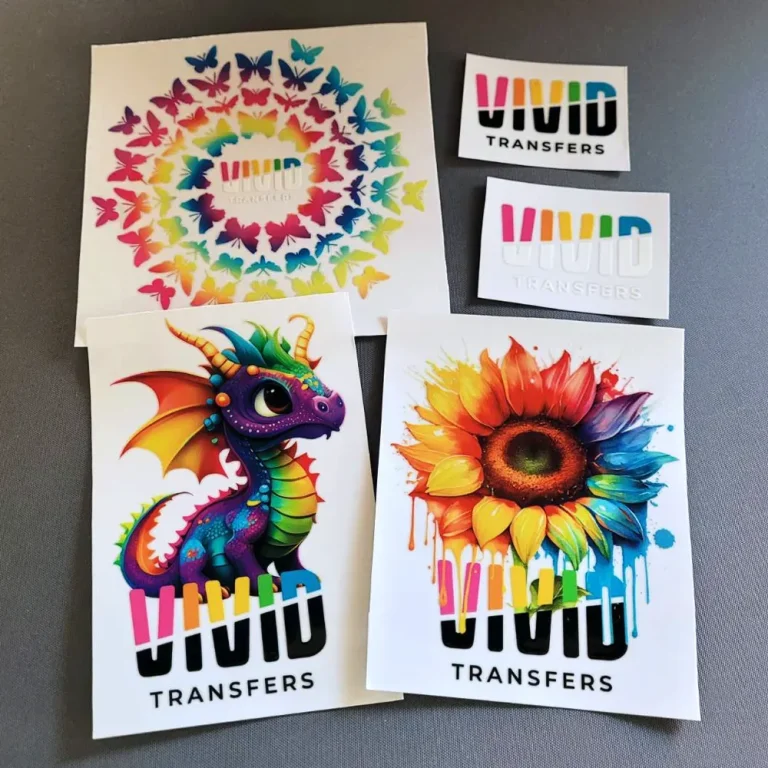UV DTF transfers are revolutionizing the landscape of modern printing, marrying innovation with practicality. This advanced technique utilizes ultraviolet (UV) light to cure inks on film, resulting in vibrant, high-quality prints that are both durable and visually striking. As businesses seek to enhance their offerings, understanding the benefits of UV DTF can provide a competitive edge in a saturated market. Companies embracing this technology can enjoy increased versatility across different substrates, allowing for tailored solutions that cater to diverse consumer demands. With a push towards sustainable printing practices, UV DTF transfers not only deliver exceptional results but also align with the growing market expectations for eco-friendly solutions.
When it comes to contemporary printing methods, UV Direct to Film transfers represent a significant technological advancement. This innovative approach employs ultraviolet curing techniques, serving as a modern alternative to traditional Direct to Film (DTF) printing. By producing strikingly detailed and colorful images on a variety of materials, this form of printing has captured the attention of printing businesses looking to expand their capabilities. Additionally, the eco-friendly nature of UV ink solutions aligns with current trends towards sustainable manufacturing practices. As more companies recognize the efficiency and versatility of ultraviolet curing in print production, the appeal of this technology continues to grow.
Understanding the Technology Behind UV DTF Transfers
UV DTF (Direct to Film) transfers harness a unique technology that utilizes ultraviolet light to cure inks as they are printed. This process not only ensures that the prints are of premium quality, showcasing vibrant colors and sharp details, but it also allows for immediate handling after printing. The application of UV light instantly dries the inks, eliminating the long waiting periods typically associated with traditional printing methods. This capability to produce ready-to-use prints almost immediately is a game changer for printing businesses aiming to improve throughput and customer satisfaction.
Furthermore, the engineering behind UV DTF transfers involves sophisticated software and hardware that work in tandem to ensure precision and consistency. The integration of advanced imaging technology allows for intricate designs to be printed on various substrates, pushing the boundaries of creativity. As a result, printing companies can meet diverse customer demands, whether for promotional items, custom apparel, or complex packaging, leading to increased profitability and market scope.
Frequently Asked Questions
What are the main benefits of UV DTF transfers in printing?
UV DTF transfers offer numerous benefits, including high-quality printing with vibrant colors and sharp details, versatility across various substrates such as textiles and metals, exceptional durability against wear and tear, and eco-friendly printing options with lower VOC emissions. These advantages make UV DTF technology a preferred choice for printing businesses looking to enhance their product offerings.
How does UV DTF printing ensure high-quality output?
UV DTF printing ensures high-quality output by utilizing UV light to cure the inks, which results in prints that achieve vibrant colors, sharp details, and a glossy finish. This method contrasts with traditional printing techniques, making UV DTF a top choice for businesses that prioritize quality and aesthetic appeal.
Can UV DTF transfers be used on different substrates?
Yes, UV DTF transfers are highly versatile and can be applied to various substrates, including textiles, glass, metal, and plastics. This versatility allows printing businesses to expand their product range and cater to diverse customer needs.
In what ways does UV DTF technology promote sustainable printing?
UV DTF technology promotes sustainable printing by using inks formulated with lower volatile organic compounds (VOCs) and generating less waste compared to conventional printing methods. Adopting this eco-friendly approach can help reduce a printing business’s environmental impact and attract eco-conscious customers.
How does the durability of UV DTF prints compare to traditional methods?
The durability of UV DTF prints is superior to traditional printing methods. The curing process creates a robust bond between the ink and the substrate, making UV DTF prints resistant to abrasion, fading, and frequent washing, ensuring longevity and maintaining the visual appeal of the products.
What is the cost-effectiveness of using UV DTF transfers in business operations?
Although the initial investment in UV DTF technology may be high, it offers long-term cost-effectiveness by reducing the consumption of raw materials, improving production efficiency, and lowering energy costs. These factors contribute to enhanced profit margins and minimal waste, making UV DTF a financially viable option for printing businesses.
| Key Points | Details |
|---|---|
| High-Quality Output | Produces vibrant colors and sharp details, enhancing visual appeal and brand reputation. |
| Versatility Across Different Substrates | Can print on textiles, glass, metal, and plastics, allowing for a diverse product range. |
| Durability That Lasts | Strong ink-substrate bond resulting in resistance to wear and tear, fading, and frequent laundering. |
| Eco-Friendly Printing Solutions | Low VOC emissions and reduced waste promote sustainability, appealing to eco-conscious consumers. |
| Cost-Effectiveness in Production | Long-term savings on materials and energy contribute to improved profit margins. |
| Faster Turnaround Times | Streamlined production enables quicker handling of orders, enhancing customer satisfaction. |
Summary
UV DTF Transfers offer numerous advantages that can streamline and elevate the operations of printing businesses. By employing this innovative technology, printers benefit from high-quality output with vibrant colors and sharp details, versatility across various substrates, and durable prints that withstand wear and fading. Furthermore, the eco-friendly aspects of UV DTF Transfers not only align with sustainable practices but also cater to the growing consumer preference for environmentally conscious products. Additionally, the cost-effectiveness and faster turnaround times enhance profitability and operational efficiency. Overall, adopting UV DTF Transfers positions printing businesses to thrive in a competitive and rapidly evolving market.

